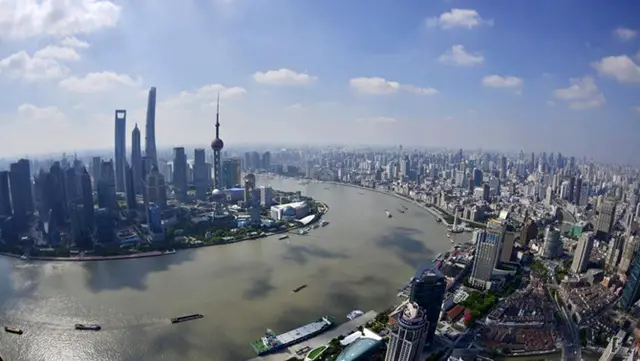International observers and media following China's "two sessions" have hailed the government work report delivered by Premier Li Keqiang to national lawmakers Saturday.
Experts said slower growth in China in 2016 will be good for structural reform and that the outlook for the country and the world remained positive.
Practical economic targets
Li announced in the report a 6.5 percent to 7 percent expansion goal for 2016, down from the some 7-percent growth rate last year. He also unveiled a record fiscal deficit.
The announcement marked China's adoption of a range for its growth target rather than a specific number for the first time in two decades.
James Laurenceson, economist and deputy director of the Australia-China Relations Institute, said China's goals elaborated in the work report were "a positive development."
Wall Street Journal said China's adoption of a range for its growth target rather than a specific number would give itself more flexibility in a system where hitting stated goals remains politically important.
Even faced with remarkable downward pressure, China's growth forecast is still above expectations of some Western economists and the International Monetary Fund, said the paper.
Tom Orlik, chief Asia economist at Bloomberg Intelligence in Beijing, confirmed the positive nature of China's growth target.
"The headline message is that the GDP growth target is slightly lower, but still ambitious. That's testing but achievable," he said.
Bert Hofman, World Bank's country director, said the announced range for the indicative GDP growth rate is welcome. "It provides needed flexibility for balancing structural reforms and demand management," he was quoted as saying by Bloomberg.
Resolve for reform
China pledged in the 13th Five-Year Plan to pick up the slack left by falling productivity and weak property investment, accelerate the restructuring of its bloated state-owned industries, and continue pushing the economy from decades-old dependence on investment and manufacturing toward consumption and service industry, experts said.
According to IG market analyst Angus Nicholson from Australia, China's reform is "very much significant and signifies the direction that the government is trying to take the country."
"That really underscores the fact that a lot of the excess capacity is in the secondary sector. The industrial sector is steadily going to have to be dealt with throughout the next five years," he said.
"In this sense, supply-side reform does make significant progress, stimulus is required to offset the short-term drag on demand," noted Orlik.
"In order to hit the target and offset the short-term drag from industrial restructuring, monetary and fiscal policy support will both be expanded," he said.
Attempts to revive the property sector may move into higher gear. The government plans to encourage more mortgage lending, lower the cost of property transactions and urge investors to buy and lease inventory.
Analysts said that the focus of China's reform is on addressing overcapacity. The government said cuts in steel and coal will be "major work," and promised to deal with zombie companies "properly" and to strengthen supply-side reform.
Laurenceson of the Australia-China Relations Institute argued that China's growth expectation would commit policymakers to readjustment.
"It commits them to reform. It gives them an added incentive to do what they need to do, even if it's tough to achieve the goals they set out," said Laurenceson. "You can't get 6.5 percent growth doing exactly what (China) is doing now."
Hopes,challenges ahead for China,world
IG's Nicholson said that over the last year, international traders have become more "sanguine" on China news.
"The key thing for markets going forward are certainly the fact that more fiscal spending is coming ... the fiscal deficit will be raised to 3-percent of GDP for 2016," Nicholson said.
"All of that is supportive of markets, but of course a key focus for particularly global investors will be what happens to the currency and are we going to see the Chinese yuan stay at a stable level or is there going to be a further depreciation or even a major one-off devaluation," he noted.
Nicholson added that China's emphasis on restructuring and service sector and its ambition to create a moderately prosperous society will moved the national economy in the right direction and bring a lot of opportunities.
"Opening up elements of China's services economy to foreign enterprises are a great way to spread those opportunities and benefits to the globe," he said.
However, experts pointed out that the supply-side reforms to deal with overcapacity in the industrial sector mean those companies structured to China's previous heavy investment-led growth are still waiting for some tough times to come.
"That is still having some significant effects on how the world economy functions and China's role in directing a lot of global trade and investment," Nicholson said.
He noted that low or even negative interest rates, loose monetary policies and currency devaluation in many countries are a major concern for China and could really hinder its GDP growth targets.
However, he pointed out that "there are some very sound targets (in Li's report) and there's some clear understanding of the issues in the Chinese economy and hopefully that will be dealt with steadily over the next five years."
"I have this fundamental confidence that the pressure for the Chinese government to achieve growth means the reforms will happen" despite opposition from specific interest groups, Laurenceson said. "(The reform) is difficult but the imperatives are so strong that I'm optimistic it will happen." Enditem
 简体中文
简体中文

